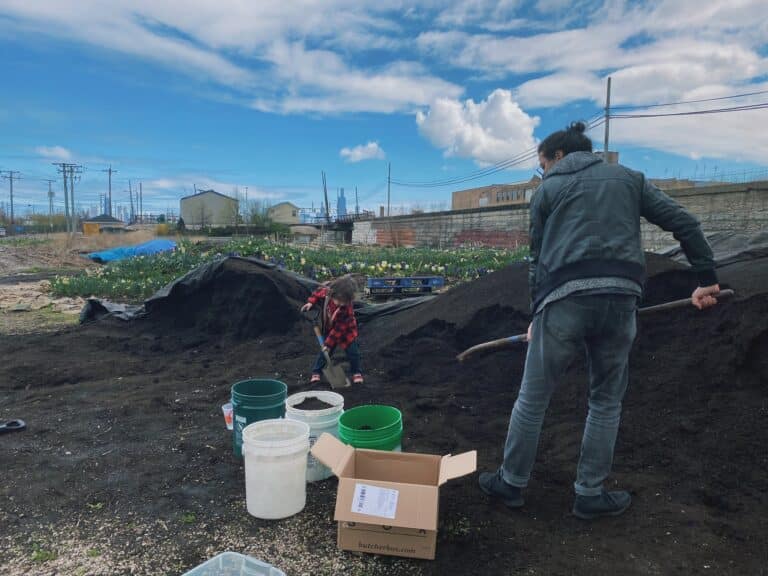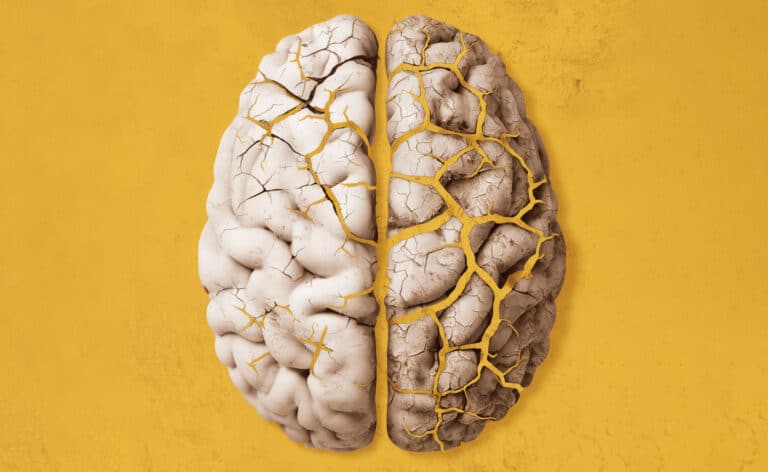The United Nations this month released a major climate change report, the first of its kind in eight years. The report outlines what scientists know about global warming and informs policy makers how to slow the planet’s rising temperatures. All of the world’s 195 countries participated in the report’s development, with hundreds of scientists assessing studies from around the world.
The report’s main conclusions — that humans are causing climate change, that temperatures will rise if we don’t cut emissions, and that weather is getting more extreme — didn’t surprise community health specialist Elena Grossman, MPH. Grossman is principal investigator at BRACE-Illinois, a CDC-funded project based at the University of Illinois at Chicago that since 2012 has guided the state’s public health system in responding to climate change.
She calls the UN report “the most confident report yet” and adds, “I hope this report will lead us away from talking about whether [climate change] is happening to what we are going to do about it.”
Action is key, in part because climate change has a direct impact on human health. A hotter planet leads to more extreme weather, which in the Midwest involves droughts, extreme heat, and flooding. Illinois has seen a 40% increase in days with at least 2 inches of rain in the past century. The state’s temperatures have already risen by 2 degrees at night, and by mid-century, scientists project as many as 40 additional days of temperatures 95 degrees and above, depending on how we limit carbon emissions now.
Through BRACE-Illinois, Grossman helps communities prepare. Showing people the connections between climate change and health is key, Grossman says.
In Cook County, 80% of people say they believe global warming is happening. Yet, only 52% believe that it’s personally harming them.
“Climate change isn’t something you see and touch, but in these last two years there have been so many [extreme weather] events, people are starting to connect it,” Grossman says.
-
Asthma and allergies
Americans make more than 13 million visits to doctors’ offices for allergies every year, according to the Environmental Protection Agency. And for 15% of Americans, ragweed is a main culprit. With earlier springs, later frosts, and more rain, ragweed season now lasts between 15 and 25 days longer in the Midwest than it did in 1995.
“People who complain of new or worsening allergies maybe don’t see that climate change is a cause,” says Regina Deleon-Gomez, MD, an obstetrics and gynecology hospitalist at Northwest Community Healthcare.
More pollen in the air also raises the risk for more severe asthma attacks. Without action to slow temperature rise, the Natural Resources Defense Council reports that in 2030, an estimated 3,700 additional Americans will end up in emergency rooms due to oak, birch, and grass pollen. In 2050, that number will jump to more than 6,000 additional asthma-related visits, with one-third of the country’s asthma ER trips happening in the Midwest.
-
Respiratory issues
The air quality index shows the level of air pollution in an area; the higher the number, the more dangerous the air is for people with breathing issues.
Poor air quality can hamper the health of people with respiratory diseases — and even those without respiratory issues, Grossman says.
The American Lung Association in 2021 ranked the Chicago-Naperville area as the 16th most ozone-polluted area in the country. When sunlight and heat mix with ground-level pollution from cars and power plants, smog worsens.
Many people who live with respiratory diseases such as chronic obstructive pulmonary disease (COPD) check the air quality index, in addition to the temperature, to see if it’s safe for them to be outside.
With rising temperatures, people with respiratory issues can expect to spend more time indoors — or risk their lungs. But even indoors isn’t guaranteed worry-free, as increased flooding can lead to mold growth in homes and other buildings.
-
Heart disease and stroke
Scientists have also linked smog to heart attacks and temperature increases to stroke. Heat stress increases the body’s temperature, which can cause a cascade of responses in our bodies, according to a 2020 study in Nature Reviews Cardiology. In extreme heat, we sweat more, heart and breathing rates go up, and blood vessels dilate. All of these changes can lead to heart imbalances, increased artery pressure, inflammation, and impaired blood clotting.
-
Risks to pregnancies
A landmark study of 32 million U.S. births from 2007 to 2019 links air pollution and heat exposure with devastating outcomes for pregnant people and babies: preterm delivery, low birth weight, and stillbirth.
“I’m afraid that my patients are going to have hurdles in front of them, that it’s going to be harder for them to maintain a healthy pregnancy,” says Gomez, who also works on the executive committee of Illinois Clinicians for Climate Action. “Clinicians are still learning how to help their patients protect themselves from the effects of these climate exposures. It’s like a race. I’d like to see us be able to get ahead of it and be proactive. In the meantime, we’re not doing enough to slow down climate change.”
-
Heat stroke and exhaustion
When the heat index reached 106 degrees on August 10, Gomez says she counseled patients to stay hydrated and out of the heat. “There are people on medications that can affect how they perceive or tolerate heat,” Gomez says. Medications that may increase heat sensitivity include antihistamines like Benadryl, blood pressure medications, psychiatric medications, and stimulants.
And while many people are able to remain indoors on the hottest days, 74,680 Illinois residents work outdoors, including landscapers, construction workers, and farm workers. Jane Gozenpud, a gardener based in Glenview, is one of them.
“People simply can’t work in 90- to 100-degree heat for six, seven hours,” Gozenpud says. “People don’t understand the effects this is having on people in these industries. Anyone who works outside will tell you it’s just been very difficult. Some of my clients don’t realize. I have to be strict — I tell them my doctor told me I can’t do it.”
Twice this summer Gozenpud has experienced heat exhaustion. “You feel rotten for a day or two — dizzy, confused, not really mentally all there,” she says, adding that her work takes a hit when she takes days off due to high temperatures.
-
Tick and mosquito diseases
Rising temperatures and more rain mean more time for ticks and mosquitos — and the diseases they spread. Blacklegged ticks, which carry Lyme disease, are expanding their territory in Illinois. The ticks were in 51 of the state’s counties in 1996 and 64 counties by 2015. Milder winters will also help mosquitoes spread — and with them dengue, Zika, West Nile, and chikungunya viruses.
-
Water-related illnesses
As Illinois’ water infrastructure ages and rainstorms intensify, flooding from rain or snowmelt will become more challenging for existing sewers and septic systems. Scientists and urban planners anticipate that this will lead to more contaminated runoff from streets and farms, exposing people to diseases such as giardiasis.
Heavy rain impacts plants, too. “This year, especially, we’re not getting as much produce, not as much quality plants,” Gozenpud says. “Fruit is rotting, there’s fungus, molds. It’s all related to the humidity and rain.”
-
Mental health
For an increasing number of people, stress and worry about an uncertain future creates mental health issues, called eco-anxiety. Almost half of people ages 18 to 34 report that climate change stress impacts their daily lives, and 68% of adults report at least some eco-anxiety, according to the American Psychological Association.
“This is relatively newer, but particularly younger people are feeling anxious and depressed about the future,” Grossman says.
When people’s homes are damaged because of extreme weather, people may end up displaced, either temporarily or permanently, causing anxiety, depression, and post-traumatic stress disorder. They may lose meaningful personal items or have financial losses.
The Federal Emergency Management Agency’s crisis counseling program addresses this by funding community organizations in areas where there have been extreme weather events. The organizations often create support groups after these disasters and help people access mental health services.
Gozenpud says she copes, in part, through educating her gardening clients, talking with her kids about climate change, and volunteering in her community. Mitigating carbon emissions and reducing climate change must start now, Gozenpud says.
“I’ve stopped being cautious with my wording. I anticipate things getting much worse very quickly. We have a very, very, very short window to minimize our carbon load. If we don’t take immediate action, then in the next five years, I anticipate things getting dire,” she says.
Extreme weather events can create an awareness that ultimately saves us, because climate change is already impacting our health. “We need to have more of these conversations, and health can be a powerful tool,” Grossman says.

An award-winning journalist, Katie has written for Chicago Health since 2016 and currently serves as Editor-in-Chief.










